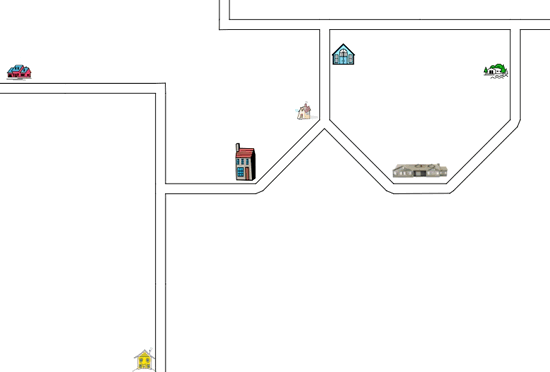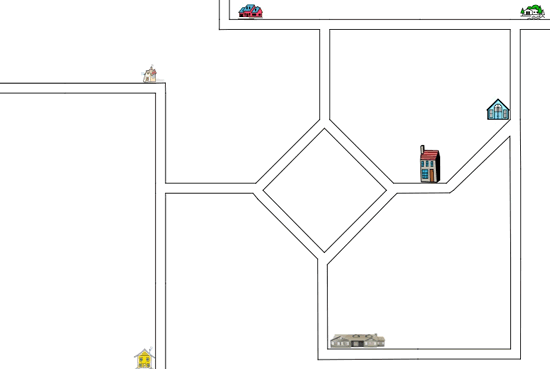Skip over navigation
Well, we're going to look at visiting places.
Here's the road map:

There are six places to visit:
1. Relations who live in the tall house;
2. Friends who live in the house with trees;
3. The wide school building;
4. The blue church;
5. The health centre with blue roof and pink walls;
6. The little pink shop which is leaning over.
You live in the yellow house at the bottom of the map.
Starting at your house, try to describe the journey to each of the six places.
You'll need to describe the bends in the road [how much they turn] and which way to turn at junctions.
Having done that what about trying this next one too:

We have the same places to visit, but they are in different places now.



Or search by topic
Number and algebra
Geometry and measure
Probability and statistics
Working mathematically
Advanced mathematics
For younger learners
Six Places to Visit
Age 7 to 11
Challenge Level 





Well, we're going to look at visiting places.
Here's the road map:

There are six places to visit:
1. Relations who live in the tall house;
2. Friends who live in the house with trees;
3. The wide school building;
4. The blue church;
5. The health centre with blue roof and pink walls;
6. The little pink shop which is leaning over.
You live in the yellow house at the bottom of the map.
Starting at your house, try to describe the journey to each of the six places.
You'll need to describe the bends in the road [how much they turn] and which way to turn at junctions.
Having done that what about trying this next one too:

We have the same places to visit, but they are in different places now.
You may also like
Clock Hands
This investigation explores using different shapes as the hands of the clock. What things occur as the the hands move.
Watch the Clock
During the third hour after midnight the hands on a clock point in the same direction (so one hand is over the top of the other). At what time, to the nearest second, does this happen?
Take the Right Angle
How many times in twelve hours do the hands of a clock form a right angle? Use the interactivity to check your answers.

